Hue is the best city in Vietnam for connecting with some of the country's unique character and atmosphere - as well as history, culture and cuisine. Hue still has much of the unique charm that captivated me in Vietnam decades ago.
The capital of Vietnam from 1802 until 1945, Hue was at the centre of most things in Vietnam's turbulent modern history - including the Vietnam War. But it has retreated from centre-stage since the end of the war in 1975.
Agrguably, this is where the best and the worst of Vietnam's past has played out. There's been imperial glory, a flourishing of arts, culture and spiritual life. Then there's been the bloodshed of war, tyrannical rule and an exodus of local people.
Hue's history is a difficult. And you get the impression Vietnam hasn't yet worked out how it wants to tell the stories of Hue. Much of the history goes untold.
A visit to Hue will have more meaning if you take some time to read the history of the country.
Hue travel highlights
* Pretty much everything important in Vietnam from 1802 until the end of the Vietnam War in 1975, had a deep connection with Hue. History is everywhere.
* Citadel and tombs of the Nguyen Emperors display imperial megalomania, design genius, magnificent gardens and grounds.
* Delicious, unique local cuisine
* Heart of Vietnamese Buddhism with pagodas and temples dotted among the imperial structures.
* Beautiful countryside for cycling
* Old tree lined streets
* Friendly welcoming people
* Extraordinary modernist architecture - including two dramatic Catholic churches.
* Excellent photography opportunities
This is one of the most photogenic cities in Vietnam. There are old gems lurking on the streets and in the countryside. And the local cuisine is delicious. The people still have a provincial warmth about them too.
Hue's weather is notoriously bad. The summer months are excruciatingly hot. Autumn, spring and winter experience lots of rain. Rain in Hue can be a nice fit though. Unless it's flooding, don't let rain deter you.
Go beyond the “standard” Hue travel itinerary and there’s a good chance it’ll be a highlight for you too.
Vietnam’s tourism boom has mostly passed Hue by. The city at the centre of so much of the country’s history and culture - the capital until 1945 - has mostly failed to make a mark on international travellers.
Domestic tourists come in droves. International tourists, less so - far fewer than the local tourism industry hopes for. In 2024 that may be slowly changing.
These days many who do come to Hue are interested in the 1990s waterpark ruins and the noisy drinking culture that has developed in the backpacker precinct. YouTubers and Instagrammers mostly leave non-plussed.
Hue deserves at least three of days. Check out our recommendations of things to do and you’ll see why.
Hue Background
Hue’s location at Vietnam’s geographical heart may have ordained its special role in the most turbulent two centuries of the country’s history. Even before it became the Nguyen Dynasty capital of Vietnam in 1802, Hue was the base for the Nguyen clan who controlled the south of the country.
Hue remained at the centre of Vietnam geographically and politically right up until the end of the Vietnam War. The Nguyen Dynasty may have collapsed in 1945, but Hue continued to play an outsized role in national affairs for another 30 years.
But modern Hue is a city of loss - loss of prestige and sovereignty to colonial France, loss of purpose as a deposed capital, and loss of culture, innocence and life in decades of terrible war. If ever a city flew too close to the sun, it was Hue.
Contemporary Hue carries itself with modesty. From national capital to 5th or 6th ranking city, the drama of Hue’s past is well hidden in a quest for a new future. And a good many of Hue’s travellers leave disappointed, unaware of the rich tales they almost collide with as they pass through.
Hue’s complex history - where all sides have had their good and bad days - doesn’t see the light of day for most travellers. The sights are offered devoid of context and detached from major events.
The cast of characters whose formation took place in Hue is formidable. Ho Chi Minh, his military mastermind Vo Nguyen Giap, and long term prime minister Pham Van Dong, all spent time here. And their rivals, the last Emperor Bao Dai, South Vietnamese President Ngo Dinh Diem and his infamous family of despots and bishops, also hailed from Hue.
And then there are the Buddhist leaders at the centre of the uprising that precipitated the escalation of the United States’ entanglement in Vietnam in the early 1960s. And not to be overlooked is the cast of celebrated musicians, authors, poets and painters who also hail from Hue.
Some of the most brutal battles of the Vietnam War were fought in and around Hue.
It requires more than a little effort to uncover the stories of Hue as you pass through. Somehow, the city seems to prefer to forget, not just the people of its royal past, but those big players in Vietnamese history who came later as well.
Most cities make a big deal of their famous progeny. Not Hue.
Armed with a little knowledge of your own, you can bring Hue to life yourself. Despite the city’s best efforts to camouflage it, Hue’s atmosphere is irrepressible. Spend a little time here and you’ll start to get it. More than any other Vietnamese city, Hue still moves to a rhythm that is at once uniquely Vietnamese and uniquely Hue.
Check out our suggestions for things to do here.
You can also check out our 3 day Hue itinerary here.
HUE NEED TO KNOW
Hue - getting there and away
By air
Hue’s Phu Bai airport, a massive US airbase during the war, serves domestic flights from Saigon and Hanoi each day. It’s a rather more mellow experience than it must have been in the 60s and 70s.
The journey to the centre of town is around thirty minutes and fixed price taxis are available for 350,000VND. There’s a good chance you’ll be able to negotiate something a little cheaper as well. Check with your hotel as their pick up service may be cheaper and more convenient.
Danang airport is three hours from Hue making it an alternate option for those wanting to combine a visit to Hue with travel to Hoi An and cross the scenic Hai Van Pass. It would be feasible, if not very desirable, to fly into Danang, visit Hoi An for a morning and then drive to Hue in a single day.
Rail
Hue lies close to half way between Hanoi and Saigon along the famed Reunification Express route. The train station is 10 minutes from the centre of town. Travellers arriving should insist on a metered taxi to the town centre.
Many travellers take the Reunification Express from Hanoi or Ninh Binh to Hue. The journey takes at least eleven hours depending on which service you take. Details are available from Hanoi railway station and many travel agents and hotels in Hanoi also book train travel.
The legendary Hai Van Pass rail journey between Hue and Danang is recommended. Train is also a good option for onward travel from Hue to Phong Nha to the north.
Road
Hue is usually the stop before or after Hoi An depending on whether you’re travelling from the north or the south. The road trip to/from Hoi An is around 2.5 - 3 hours using the tunnel route.
Best to take the more scenic route across the Hai Van Pass, add another 30 - 60 minutes - especially as you’ll probably make a few photo stops along the way.
Some travellers visit Hue as a day trip from Hoi An. It’s a big call. Hue deserves a proper stay. Those who try it seem to return to Hoi An with little idea of where they’ve been and wondering why they bothered with 6 hours of driving. Hue deserves a couple of days rather than a few hours.
Hue is a popular base for day trips to the DMZ - the former border area between north and south Vietnam and scene of fierce fighting during the Vietnam War.
Hue is also frequently used as a point of departure for travel into or from southern Laos. It’s around 12 hours from Hue to Savannakhet in Laos by bus. It’s a rough ride but it’s now well worn by backpackers wanting to explore southern Laos. Buses to Laos can be arranged at traveller cafes in Hue and Hoi An. Beware though, these can be long uncomfortable rides.
Hue - getting around
One of the nicest things about Hue is that it’s an easy place to get around on foot and by bicycle. The town centre is compact and its tree lined streets are uncongested by the standards of the rest of the country.
Travel to sights nearby the city is through picturesque rural country along mainly quiet lanes. For the less energetic, cyclos are a good option around town (choose your cyclo driver carefully) and xe om motorcycle taxis can get you to all the sights outside of town.
Be sure to negotiate your rate with your cyclo or xe om before climbing aboard. Hue's cyclo drivers don't have a great reputation so choose carefully.
For those with less time on their hands, car access puts all of Hue’s sights a short journey away. Taxis are also plentifully available and can be hired by the day for metered or fixed price journeys to nearby sights. Grab (Vietnam's version of Uber) rideshare cars are also available in Hue. Usually best to settle on a fixed price and remove scope for nasty shocks.
Health and safety in Hue
Hue is a very safe city to travel in. The roads are safer than many other parts of the country - though they’re getting busier fast - and street crime is rare. Cyclo drivers are persistent to the point of annoyance.
If you’re cycling or motorcycling, always be very careful. Hue’s roads may be less chaotic than other parts of Vietnam but they still throw up plenty of surprises and their share of dangerous manoeuvres. Don’t be lulled into a false sense of security.
If you do have an accident or need some medical help in Hue, the situation is less reassuring. Hue’s hospital infrastructure is basic. If you need medical help, the best general hospital is Hue Hospital.
Hue Central Hospital
16 Le Loi Street, Hue City
Telephone: (054) 822325/6 (Switchboard)
Services: emergency, medical and surgery
The nearest international medical service is located in Danang and facilities there are also limited.
Check with your hotel for the latest advice on hospitals and clinics in Hue.
ATMs, cash and cards in Hue
ATMs are very widely available in Hue as are banks with foreign exchange counters. Credit cards are accepted in major hotels. Smaller hotels are more likely to accept Mastercard and Visa though less likely to accept Amex and Diners.
Internet WIFI and 4G in Hue
Internet access in Hue is very straightforward. All major hotels, cafes and restaurants offer free internet access. 4G telephone coverage is good in the town and around the major tourist sights. Local SIM cards can easily be purchased.

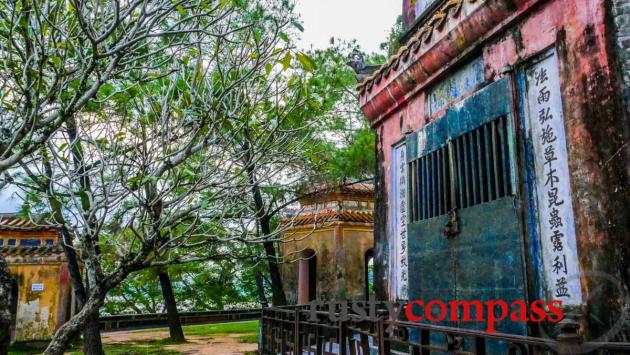
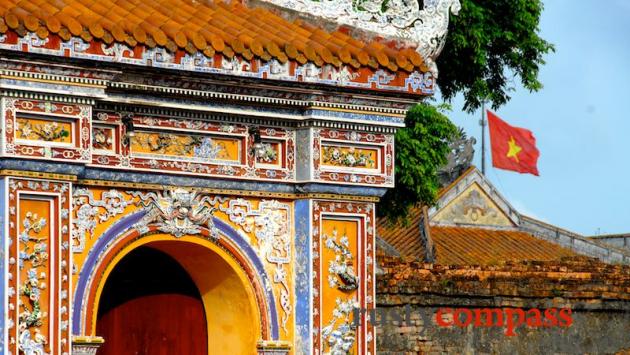
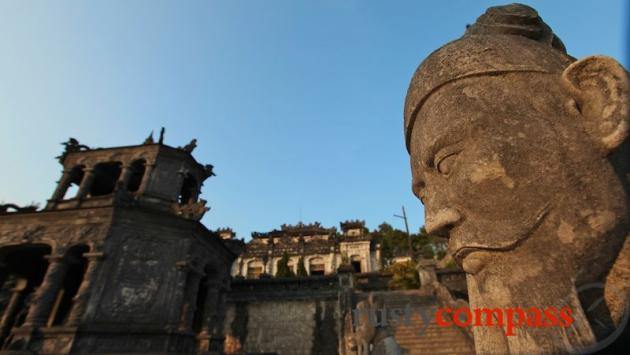
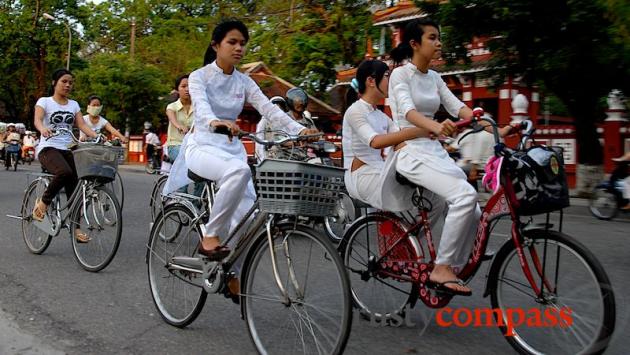
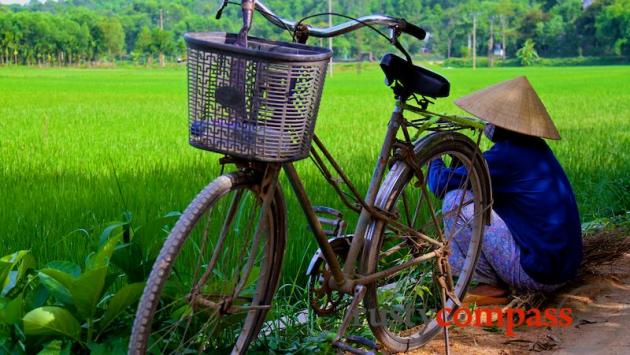
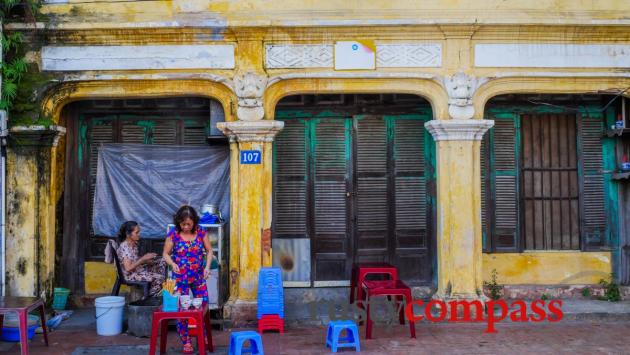
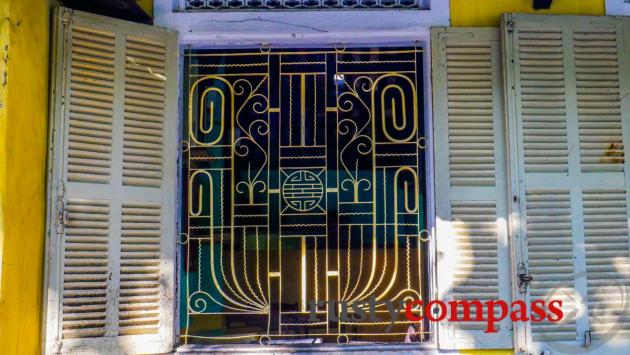
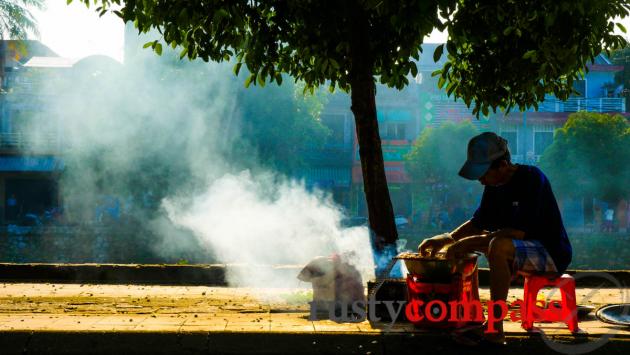
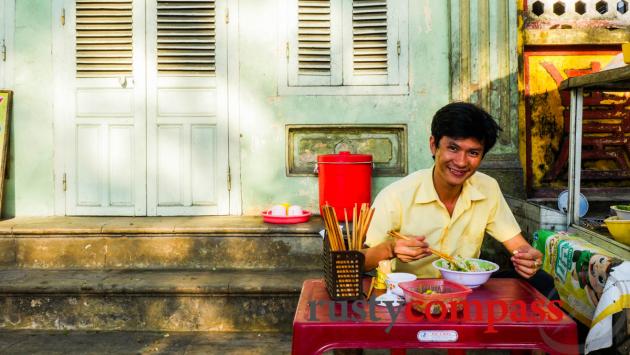
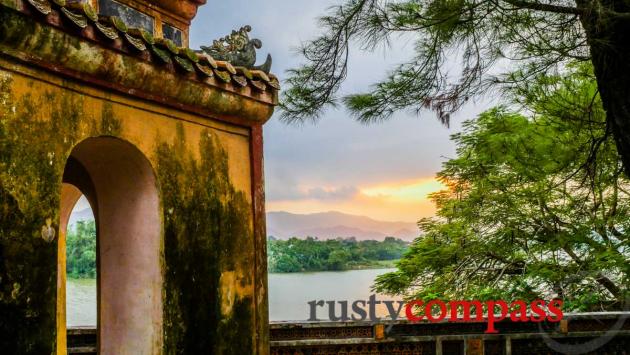

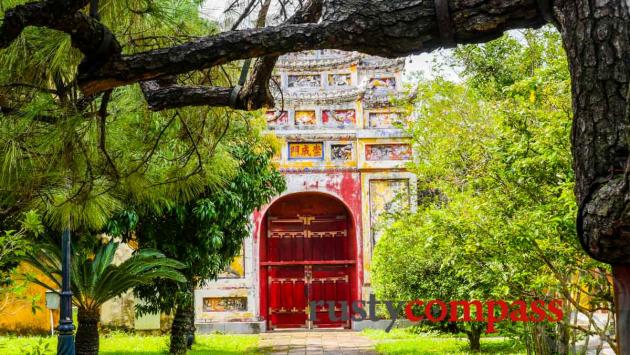
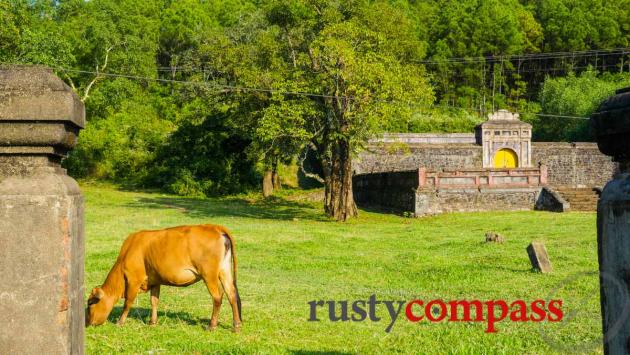
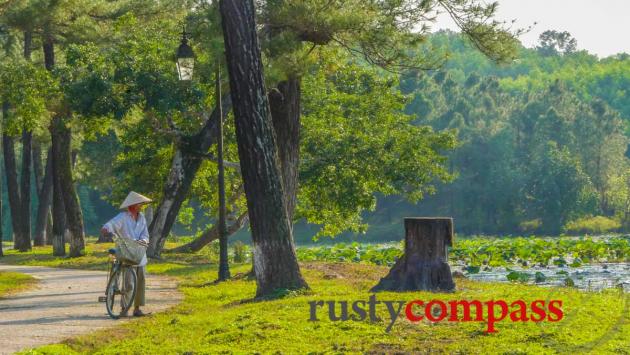
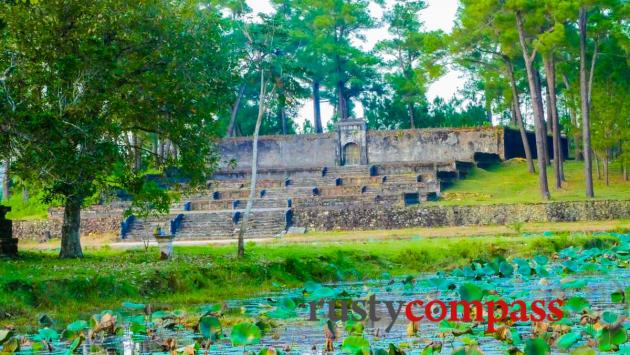
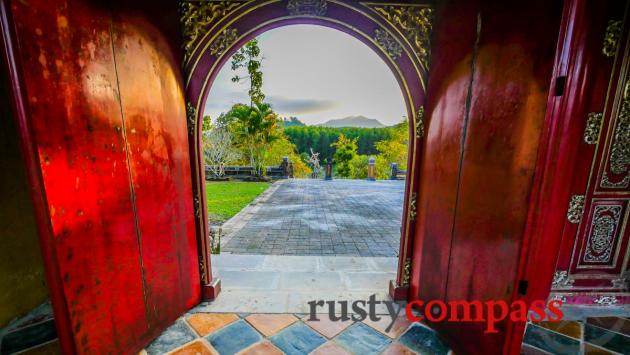
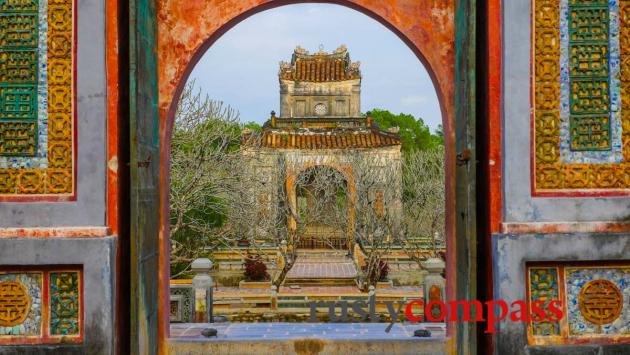






Twitter: @rustycompass
Rusty Compass is an independent travel guide. We’re focused on providing you with quality, unbiased, travel information. That means we don't receive payments in exchange for listings and mostly pay our own way. We’d like tourism to be a positive economic, environmental and cultural force and we believe travellers deserve disclosure from publishers. Spread the word about Rusty Compass, and if you're in Saigon, pop in to The Old Compass Cafe and say hi. It’s our home right downtown on Pasteur St. You can also check out our unique tours of Ho Chi Minh City and Sydney at www.oldcompasstravel.com Make a financial contribution using the link below. Even small amounts make a difference. Thanks and travel well!